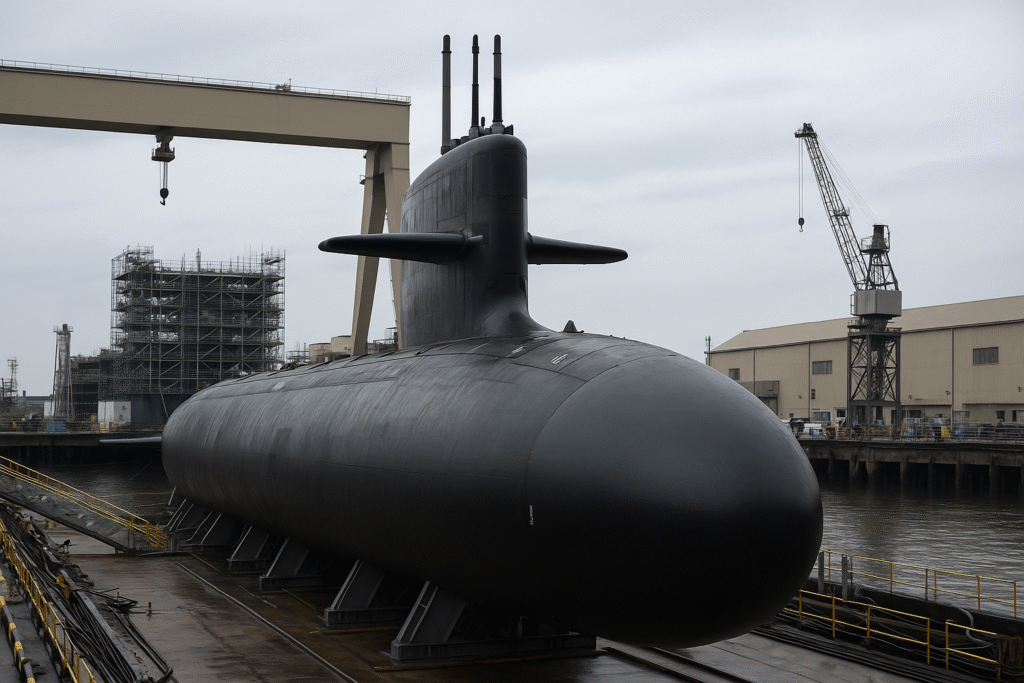The United States has launched a review of the Aukus submarine pact with Australia and the UK, sparking concern among allies and renewed debate about the future of the strategic trilateral agreement. The review, seen by some as a push for Australia to ramp up defense spending, comes at a critical time for the Indo-Pacific security partnership.
What is Aukus?
Signed in 2021 by then-President Joe Biden, UK Prime Minister Boris Johnson, and Australian Prime Minister Scott Morrison, the Aukus agreement aims to bolster regional defense against China by enabling Australia to acquire nuclear-powered submarines using U.S. and UK technology. As part of the plan, a next-generation attack submarine called the SSN-Aukus will be jointly developed and built by Australia and the UK using highly classified U.S. nuclear-propulsion systems.
To fill the capability gap before the SSN-Aukus submarines are ready—expected by the 2040s—the U.S. also committed to selling Australia up to five Virginia-class submarines beginning in 2032.
The Review: A Shock to Aukus Supporters
The Pentagon’s announcement of the review caught key supporters off guard. Congressman Joe Courtney, a prominent Aukus advocate, called the move a “thunderbolt.” While the Biden administration initially signed the deal, the current review is being conducted under President Donald Trump’s administration and led by Elbridge Colby, the under-secretary of defense for policy, who has expressed skepticism about Aukus in the past.
Though Canberra and London downplayed the significance of the review, saying such evaluations are standard with new administrations, many see the move as part of a broader strategy to pressure Australia into raising its defense spending.
Challenges in Submarine Production
One of the main issues fueling the review is concern over the U.S. Navy’s ability to produce enough Virginia-class submarines for both its own fleet and for Australia. Current production rates have struggled to meet targets—averaging just 1.2 submarines per year since 2022. The U.S. aims to increase that to 2.3 annually by 2028.
Despite production bottlenecks, supporters of Aukus point to the $3 billion that Australia has pledged to invest in the U.S. submarine industrial base as a step toward alleviating capacity concerns. Courtney argued that there is no need to make a final decision now and that the situation is expected to improve significantly within three years.
Strategic Importance of Aukus
U.S. military leaders have continued to emphasize the strategic benefits of Aukus. Admiral Samuel Paparo, head of U.S. Indo-Pacific Command, told Congress that the deal offers a “generational advantage,” allowing U.S. and UK submarines to operate from Perth by 2027, which would drastically reduce response times to potential conflicts in the South China Sea.
Paul Myler, a former Australian diplomat, argued that Aukus also supports Trump’s goal of revitalizing the U.S. shipbuilding industry. He noted that Aukus would make Western Australia the largest naval hub in the Southern Hemisphere, vital for submarine maintenance and operations.
Concerns and Calls for a Contingency Plan
However, not everyone is confident in the pact’s viability. Former Australian Prime Minister Malcolm Turnbull warned that the U.S. might ultimately be unable to spare Virginia-class submarines for Australia due to its own military needs. He called on Canberra to prepare a “Plan B” in case Washington is unable to deliver.
“If the U.S. Navy is already short of SSNs and its industry is producing too few to replace retirements, how could any president, even a friendly one, part with any of them?” Turnbull asked.
He urged Elbridge Colby to deliver a candid assessment to Australia, even if the news is unwelcome.
Pressure to Increase Defense Spending
According to analysts, the review may be more about U.S. leverage than submarine logistics. Several sources familiar with the matter told the Financial Times that the review is part of an effort to persuade Australia to increase its defense spending. Defense Secretary Pete Hegseth has reportedly encouraged Canberra to raise its military budget from just over 2% of GDP to 3.5%.
Matthew Sussex of the Australian National University echoed that view, noting that U.S. officials have grown frustrated with what they see as Australia’s slow commitment to defense investment.
Outlook Remains Cautiously Optimistic
Despite uncertainties, high-level leaders remain publicly optimistic. UK Prime Minister Sir Keir Starmer and Australian Prime Minister Anthony Albanese are both expected to discuss Aukus with President Trump at the upcoming G7 summit in Canada. Meanwhile, Michael McCaul, chair emeritus of the House Foreign Affairs Committee, expressed hope that the review would ultimately strengthen Aukus.
“With tensions in the Indo-Pacific nearing a breaking point, Aukus provides essential deterrence through nuclear submarines and advanced technologies,” McCaul said.
As strategic competition with China intensifies, the fate of Aukus remains a crucial test of allied cooperation and commitment in the Indo-Pacific.


